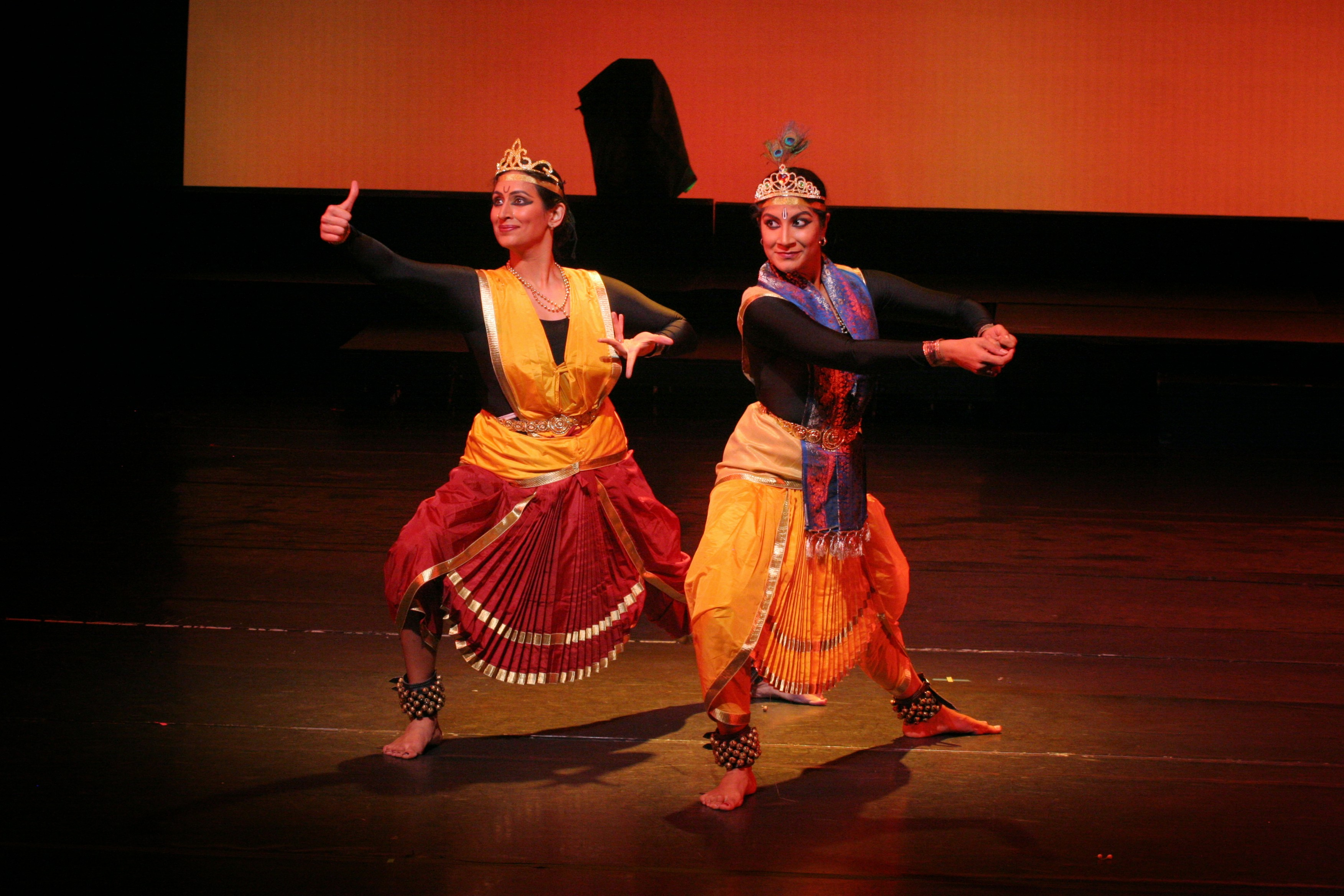In accordance with the Natya Shastra, all Indian classical dance styles are made up of the following components:
Nritta – abstract body movements which do not express any particular mood except that of the inherent joy of dancing. Each dance style has its own vocabulary of rhythmic movement.
Photo by Mukul Sheopory
Nritya – interpretative dance, where the words of the lyric are interpreted through stylized hand gestures and facial expressions.
Natya – dramatic representation and mime. This can be done in two modes of presentation: natyadharmi (stylistic depiction) and lokadharmi (realistic depiction).
Photo by Bipin Thakkar
Abhinaya – the word “Abhinaya” is explained in the Natya Shastra as “abhi” (towards), and “naya” (to carry), or to carry the spectator towards the meaning. Abhinaya can therefore be translated as communicating to the audience.
There are four types of Abhinaya:
- Angika Abhinaya: conveying the meaning through body movements. This involves natural as well as symbolic gestures, postures and movements of the major and minor parts of the body, including expressions conveyed through the subtle movements of the face.
- Vacika Abhinaya: expression through speech, including poems, lyrics, and dialogue. In addition to Natya, as described above, this includes the actor’s skill at delivering the dialogues as well as dramatists at using the correct language.
- Aharya Abhinaya: expression through costume and appearance, including Rangabhusa – the make-up and costumes, ornaments , and so forth – of the Patra, the dancer-actor, as well as the Nepathya, the stage props and decor.
- Sattvika Abhinaya: expression from within, including feelings and emotions. Sattvika Abhinaya is considered the most difficult to master.
Pictured: Late Padmabhushan Kalanidhi Narayanan, considered one of the foremost exponents in Abhinaya, depicting various emotions




